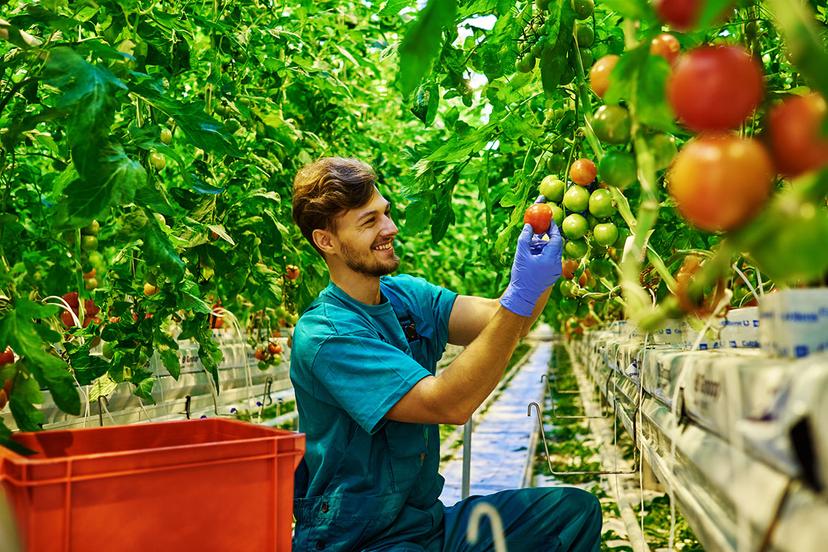Agriculture

Background
Rudimentary farming developed approximately 10,000 years ago. Archeological records reveal that people first planted seeds about 9000 B.C. However, it would be another thousand years before farming produced crops as a primary source of food. As the skills of farmers increased, food production improved. Animal husbandry, fishing, and planting skills became more sophisticated.
The inventions of machines and tools had an important impact on agricultural advancement. Prehistoric people crafted the sickle for harvesting, the Egyptians developed irrigation, and the Mesopotamians developed the plow pulled by oxen. In the Middle Ages, horses replaced oxen, increasing the speed of the plow. In the early 1700s, Jethro Tull designed and built the first mechanical seed planter.
The agricultural revolution, roughly from 1700 to the mid-1800s, revolutionized crop production. Crop rotation allowed farmland to be used continually, and animal breeding improved dramatically. Farms were thus able to yield crops that far exceeded the needs of the communities that worked on them. This surplus of food was exported to other towns where it was bought and sold by merchants. This led to the development of the marketplace, which became central to the rapid growth of cities.
Steamboats, railroads, and improved routes of transportation allowed for agricultural commodities to be distributed wider and easier, opening up the marketplace for farmers. Canning, refrigeration, and other developments in food processing in the mid-1800s also resulted in better sales.
In the early 20th century, a number of new developments helped improve and radically reshape the agricultural industry. The gasoline tractor led the way for new machine technology, while scientific advancements in the areas of plant breeding and soil conservation allowed farmers to specialize and make full use of natural resources. The 20th century was also a period of active federal government involvement in farm production. The Agricultural Extension Service, formed in 1914, brought agricultural education to farmers all across the country. New Deal legislation in the 1930s helped farmers deal with the devastation brought on by the Dust Bowl. The Agricultural Marketing Act of 1937 allowed the federal government to buy crop surpluses and donate them to the poor and to schools.
The government remains involved in agriculture today, most recently through farm bill legislation such as the Farm Security and Rural Investment Act (2002); the Food, Conservation, and Energy Act (2008); the Agricultural Act of 2014; and the Agriculture Improvement Act of 2018. Droughts, livestock epidemics, international trade disputes, and the migration of populations from rural communities to urban areas have all contributed to insurmountable problems for farmers and agricultural counties throughout the country, calling for more government assistance.
Farms have increased considerably in size since the end of World War II, while the number of farms in the United States has declined. This is partly because technology has allowed for the operation of a much larger farm than it did during the time of horse-drawn equipment and partly because of the growth of large-scale farms run by corporations. It has become increasingly difficult for new farmers to invest in the industry. The rising cost of equipment and labor and the dropping prices of commodities make it very difficult for even established farmers to maintain their land and crops. As a result, many small farm communities are evaporating. More people are migrating to urban and suburban areas, resulting in the closings of schools, hospitals, and other community institutions. For years, farmers have relied on other forms of income, such as off-farm business revenue and salaries from off-farm jobs, for the bulk of their living expenses. Some surveys show that 90 percent of farm household income is from off-farm sources.
Despite some of these grim figures for the American farmer, the agricultural industry and agriculture-related careers thrive. According to the 2017 Census of Agriculture, women have a strong foothold in this industry, being the principal operators of more than 29 percent of U.S. farms, up from nearly 14 percent in 2012. Minorities are also making significant strides. Farmers still feed the nation and the world, and new uses for commodities are opening new markets. Advances in science and technology have made agricultural production much more efficient, but also more complex, calling upon the skills of farm managers, technicians, consultants, and agribusiness professionals.
